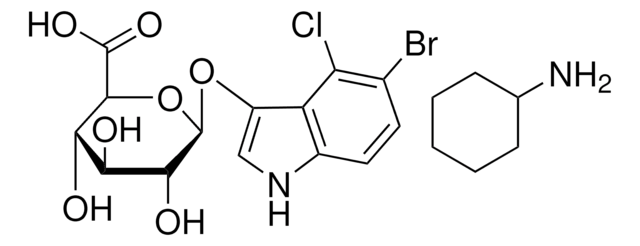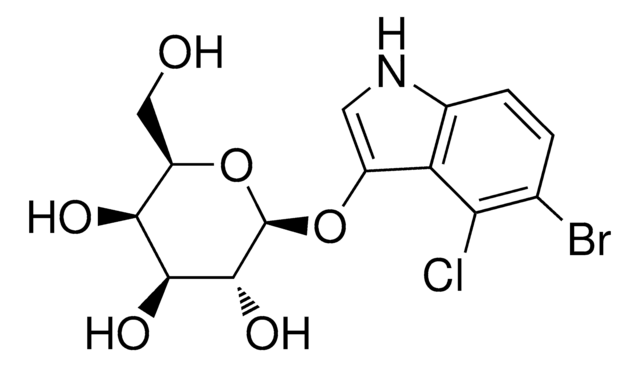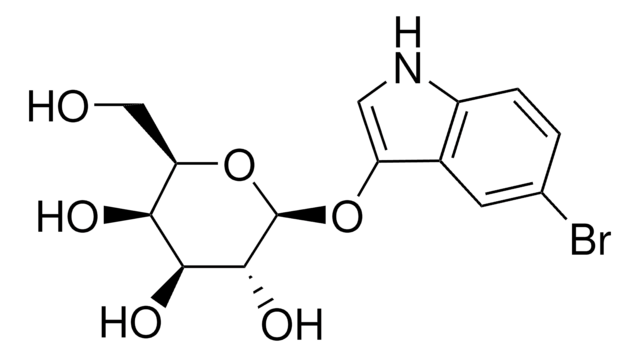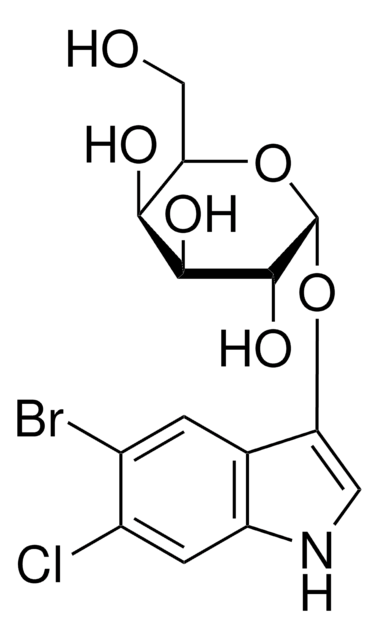B3928
Blue-White Select™ Screening Reagent
for selection of recombinant bacterial clones
Synonym(e):
Blue-White Reagent, Screening Reagent, Selection Reagent
About This Item
Empfohlene Produkte
Qualität
for molecular biology
Qualitätsniveau
Form
liquid
Verwendung
sufficient for 125 dishes (90 mm)
Methode(n)
nucleic acid detection: suitable
Eignung
suitable for nucleic acid staining
Versandbedingung
dry ice
Lagertemp.
−20°C
Allgemeine Beschreibung
Leistungsmerkmale und Vorteile
- Intense color contrast for easy colony selection
- Convenient, ready-to-use solution
Komponenten
40 mg/mL X-Gal
(prepared in DMSO)
Prinzip
The technique is based on vectors such as the pUC and the M13mp series that carry a fragment of the β-galactosidase gene encoding an a-fragment of β-galactosidase. Exploitation of these vectors requires use of a bacteria strain carrying the complementing gene fragment to allow the assembly of an active complex, resulting in the formation of blue colonies. Disruption of the ß-galactosidase gene by insertion of a DNA fragment into the vector′s multiple cloning site results in the loss of functional β-galactosidase activity; these colonies remain white, allowing for easy differentiation between lac+ and lac- colonies.
Rechtliche Hinweise
Ähnliches Produkt
Lagerklassenschlüssel
10 - Combustible liquids
WGK
WGK 3
Flammpunkt (°F)
188.6 °F
Flammpunkt (°C)
87 °C
Persönliche Schutzausrüstung
Eyeshields, Gloves, type ABEK (EN14387) respirator filter
Hier finden Sie alle aktuellen Versionen:
Besitzen Sie dieses Produkt bereits?
In der Dokumentenbibliothek finden Sie die Dokumentation zu den Produkten, die Sie kürzlich erworben haben.
Protokolle
Blue/white color selection is a routine technique employed by molecular biologists. This technique simplifies the differentiation between colonies/plaques that contain a cloning vector without an insert and those that contain a vector harboring an insert of interest.
Unser Team von Wissenschaftlern verfügt über Erfahrung in allen Forschungsbereichen einschließlich Life Science, Materialwissenschaften, chemischer Synthese, Chromatographie, Analytik und vielen mehr..
Setzen Sie sich mit dem technischen Dienst in Verbindung.





